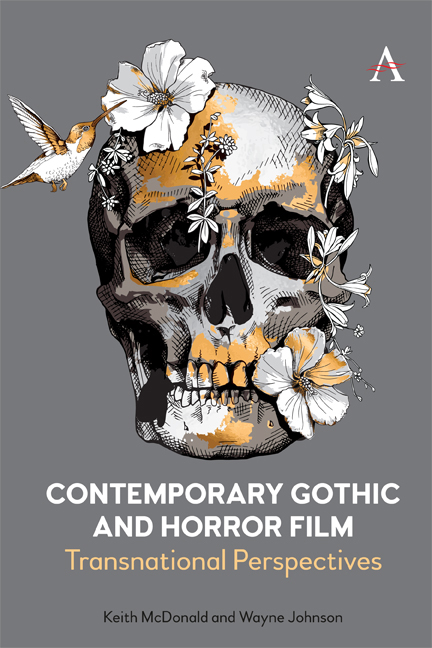Book contents
- Frontmatter
- Dedication
- Contents
- Acknowledgements
- Introduction
- 1 The Gothic Tradition Illuminated on Screen
- 2 Grief Encounters: Ghost Narratives
- 3 Folk in Hell: Rurality in Transition
- 4 Vampire Gothic as Post-Exotic Gloom
- 5 Shock and Awe: Cosmic Horror as Existential Crisis
- 6 De-Composmolitanism: Zombie Horror as Apocalypse
- Coda
- Bibliography
- Index
Introduction
Published online by Cambridge University Press: 04 June 2021
- Frontmatter
- Dedication
- Contents
- Acknowledgements
- Introduction
- 1 The Gothic Tradition Illuminated on Screen
- 2 Grief Encounters: Ghost Narratives
- 3 Folk in Hell: Rurality in Transition
- 4 Vampire Gothic as Post-Exotic Gloom
- 5 Shock and Awe: Cosmic Horror as Existential Crisis
- 6 De-Composmolitanism: Zombie Horror as Apocalypse
- Coda
- Bibliography
- Index
Summary
The sciences, each straining in its own direction, have hitherto harmed us little; but some day the piecing together of dissociated knowledge will open up such terrifying vistas of reality, and of our frightful position therein, that we shall either go mad from the revelation or flee from the light into the peace and safety of a new dark age. (Classic , 24)
H. P. LovecraftOften located in the middle of the eighteenth century as a ‘transgression’ to the ‘light’ of Enlightenment ideas of reason and science, the Gothic has been dogged by what Fred Botting refers to as a ‘negative aesthetic’ (Gothic , 10). It seemed to represent a counterpoint to the seemingly predestined move to order underpinning the era, a lingering infection of Dark Age fever in this brave new world of man triumphing over nature and the divine. The chief setting of the pioneering literature, for instance, in Middle Ages Catholic Europe, offered a similar interstitial counterpoint; light versus dark, order versus disorder, nature versus supernature, reason versus superstition. The ‘atmosphere’ of the stories, which have influenced the horror film genre beyond any doubt, seemed to throw up a competing subterranean world, supposedly kicked into the past by the confident rationalism of the new age, which heralded an inevitable and secularized transubstantiation (God, then man as God) and which seemed to threaten that rational certainty. These Gothic texts, which have had such an overpowering as well as perpetual influence on horror cinema, in fact revealed ‘disturbances of sanity and security’, according to Botting (2).
Catherine Spooner offers a useful definition of the Gothic for our own purposes: ‘undead revenants, ancient curses, outmoded belief systems, hauntings, trauma— all are central to Gothic narrative’. But, she goes on: ‘perversely what comes back-what returns-is determined by the concerns of the present’ (184). The bulk of the completion of this work was written in 2020 during a national lockdown, implemented as a consequence of a global pandemic, Covid-19. This predicament forced the authors to reflect upon a number of those very uncertainties discussed above; the actual parameters of science in this, our own postmodern age, and the dire consequences of uncontrolled human activity, among other things.
- Type
- Chapter
- Information
- Contemporary Gothic and Horror FilmTransnational Perspectives, pp. 1 - 6Publisher: Anthem PressPrint publication year: 2021



